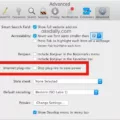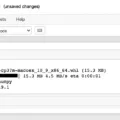Are you having trouble with System Preferences not responding on your Mac? Force quitting System Preferences may be the answer to your problem. In this post, we’ll explain what System Preferences are and how to force quit them.
System Preferences is a powerful tool used to customize settings and preferences on Mac computers. It allows you to customize things like the desktop background, display resolution, sound settings, and more. Unfortunately, sometimes System Preferences can become unresponsive or freeze due to various reasons such as compatibility issues or a corrupt file.
If you find that System Preferences is not responding, one of the best and easiest ways to fix this issue is by force quitting the app. To force quit System Preferences:
1. Click the Apple menu located in the upper left corner of your Mac screen. Alternatively, you can press the Option, Command, and Esc (Escape) keys together.
2. Click Force Quit. This will open the force quit window.
3. Select System Preferences from the list of applications that appear and then click Force Quit at the bottom right corner of the window.
If force quitting doesn’t work or if you encounter any other problems with System Preferences, there are a few other troubleshooting methods you can try:
• Boot into macOS Recovery
• Delete preferences plist file
• Run Disk Utility First Aid
• Restart Mac in Safe Mode
• Test with another Apple account
Unfreezing Mac System Preferences
If your Mac System Preferences is “frozen” and not responding, there are several steps you can take to try and unfreeze it.
First, try force quitting the System Preferences app by pressing Command + Option + Esc and then selecting System Preferences from the list of applications. If this does not work, you can try force restarting your Mac by pressing and holding the power button on your computer for several seconds until it shuts down.
Next, delete the preferences plist (property list) file associated with your system preferences. This file is used to store user preferences, so if it gets corrupted it can cause your system preferences to freeze up. To locate this file, open Finder and go to the ~/Library/Preferences folder. Look for a file that begins with “com.apple” and ends with “plist” or “prefPane”. Move this file to the trash or delete it altogether.
After that, run Disk Utility First Aid on your Mac to check for any potential errors in its startup disk. After running Disk Utility First Aid, restart your Mac in safe mode by pressing and holding the Shift key while starting up your computer. This will help diagnose any potential issues with system settings that may be causing the problem.
You can also try logging into another Apple account on your Mac to see if that resolves the issue. If none of these steps work, plese contact Apple Support for further assistance with resolving this issue.

Source: basicappleguy.com
Troubleshooting Mac System Preferences Not Quitting
It’s possible that System Preferences may have become unresponsive or frozen, which can sometimes happen if you make a change to a setting but don’t save it. In this case, you won’t be able to quit the app normally. To force quit the System Preferences app, you can click the Apple menu in the upper left corner of your Mac screen or press Option-Command-Escape (Esc) to open the force quit window. From there you can select System Preferences and click Force Quit.
Resetting Mac to Factory Settings Without System Preferences
Resetting your Mac to factory settings without System Preferences is a bit more involved than if you have access to System Preferences. First, you will need to boot your Mac into macOS Recovery. To do this, power down your Mac, then press and hold the power button until you see the startup options. Choose macOS Recovery from the list of options.
Once in macOS Recovery, select Disk Utility from the Utilities menu. You will be presented with a list of drives connected to your Mac – select the drive that contains your operating system (the name should start with “Macintosh HD”). Once selected, click the Erase tab near the top of the window and use the drop-down menu next to “Format” to select Mac OS Extended (Journaled) as the file system format. Once selected, click Erase at the bottom of the window and follow any additional prompts.
After erasing your drive, return to the macOS Recovery screen by clicking Disk Utility in the menu bar and selecting Quit Disk Utility. From here, select Reinstall macOS from macOS Utilities and follow any additional prompts. This will install a clean version of macOS on your computer, restoring it back to factory settings without using System Preferences.
What to Do When Force Quit Does Not Work on Mac
If you’re having trouble force quitting an application on your Mac, the first thing to try is to right-click the app’s icon in the Dock and select Force Quit from the pop-up menu. If that doesn’t work, you can try quitting the app by pressing Command-Option-Escape. This will bring up a Force Quit window which will allow you to select and quit any apps that aren’t responding.
If these methods don’t work, then you can force your Mac to restart by pressing and holding the Control+Command+Power buttons. This should force all applications to quit and restart your Mac. You may lose any unsaved data in open applications when you do this, so it’s best to save your work before attempting to restart if possible.
Resetting Mac System Preferences
Yes, you can reset Mac System Preferences. To do so, go to the Apple menu. in the corner of your screen and choose System Settings. Then click General in the sidebar, then click Transfer or Reset on the right. Finally, click Erase All Content and Settings. This will reset all of your Mac’s System Preferences to their default values.

Source: lifewire.com
Accessing the Lock in System Preferences on a Mac
The Lock Screen settings can be found in the System Preferences app on a Mac. To access them, open the System Preferences app from the Apple menu and click ‘Lock Screen’ in the sidebar. This will open the Lock Screen settings window, where you can adjust various settings related to your Mac’s lock screen. You can choose when to require a password after sleep or the screen saver begins, how long to wait before requiring a password when waking up, whether to show a message on the lock screen, and more.
Opening System Preferences on a Mac
The shortcut to open System Preferences on a Mac is to press the Command (?) and Spacebar keys on your keyboard at the same time, which will bring up the Spotlight search in the top right corner of your screen. Then simply type sys in the search bar and select System Preferences from the list of results, then hit Return (or Enter) to open it.
Forcing a Mac to Shut Down Without the Power Button
To force your Mac to shut down without using the power button, you can press and hold the Control + Option + Command + Power keys together for at least 10 seconds. This will cause a Forced Shutdown, which will immediately power off the system. It is important to note that performing this action may cause data loss or other issues, so it is best to try other methods of restarting or shutting down your Mac before resorting to a Forced Shutdown.
Conclusion
In conclusion, System Preferences is a powerful tool that can be used to customize your Mac and make it work the way you want. It provides access to a wide range of options, including system settings, network configuration, and more. If you experience any issues with System Preferences not responding, there are several troubleshooting steps you can take to resolve the issue. These include force quitting the app, restarting your Mac in Safe Mode, deleting preferences plist files, running Disk Utility First Aid, or testing with another Apple account. Ultimately, System Preferences is an essential part of your Mac and should be kept up-to-date so that you’re able to take full advantage of all its features.








